Netfabb by Autodesk is a must-have piece of software for any business that wants to 3D print parts with unique features only possible with additive manufacturing. It’s not, strictly speaking, a computer-aided design (CAD) tool; it’s what you use after designing in a CAD environment, like Fusion 360, to convert your part or product into the best possible version to be 3D printed.
Netfabb does mesh repair, simulation, lattice design, build prep, support generation, slicing, and more. Let’s take a look at why it plays such an important role in additive manufacturing and what’s new in the just-released 2026 version.
Is Netfabb Right for You?
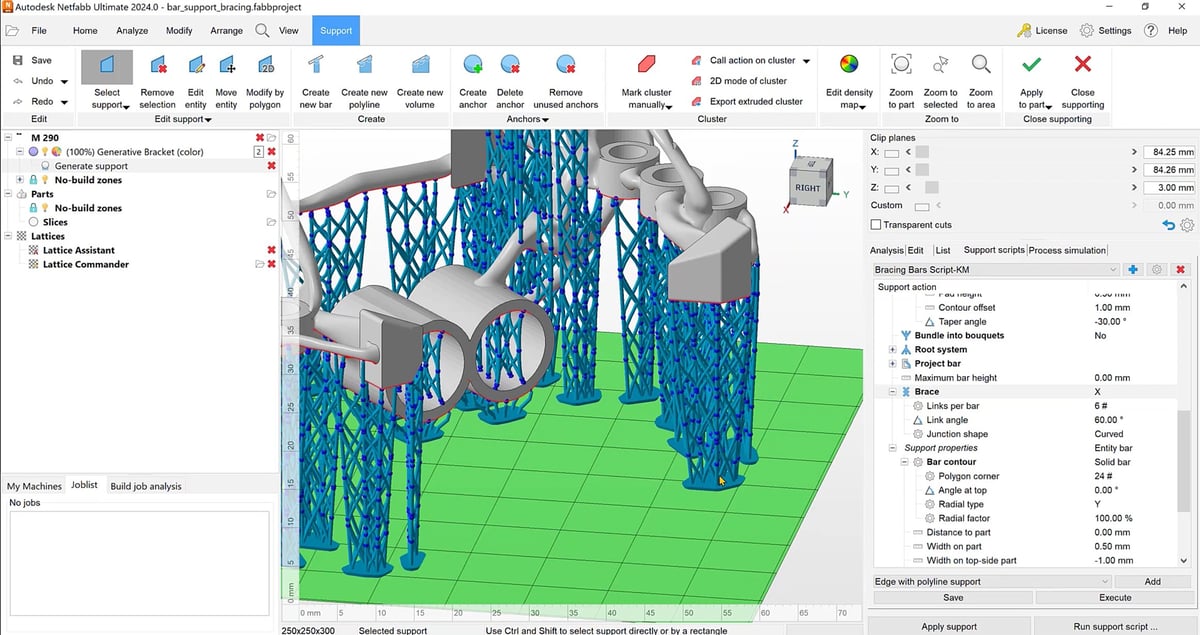
Netfabb has long been popular with engineers in aerospace, heavy industry, automotive, and medical device manufacturing. More recently, it’s been gaining ground among 3D printing service bureaus that need a reliable and scalable build prep tool that can work across multiple 3D printing technologies and brands. Netfabb offers a set of tools to streamline the day-to-day work of printing parts. It’s compatible with a wide range of professional and industrial 3D printers — you can use it as your build prep software for machines from HP to Stratasys — to essential augment or replace those machines’ native build prep and slicing software.
Netfabb’s part-file analysis and simulation features are designed to ensure that your parts and components not only print exactly as expected but also perform as needed.
The professional software is designed to help companies use additive manufacturing for business and industry in an efficient, cost-effective, and reliable way.
Design Optimization for Additive Manufacturing
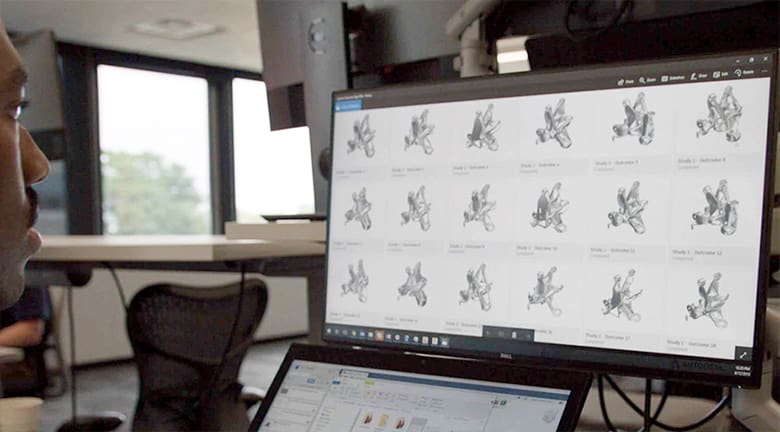
Because additive manufacturing can produce parts with unique features, such as internal lattice structures and complex geometries, which are not possible with any other type of manufacturing, it frees engineers to rethink part design completely.
However, many of the parts 3D printed today were not designed for 3D printing, they were designed for molding, casting, forging, or CNC machining. These digital files 3D print great, but you’re not getting the most out of your part or raising it to its highest potential if it doesn’t include the unique features possible with 3D printing. Netfabb enables you to take your existing digital files and redo them for additive manufacturing with a robust menu of automatic optimization features and manual tools.
Clearly, where Netfabb shines among 3D printing software, is in its ability to make your part or model better by applying additive manufacturing features to it, including topology optimization.
For example, you can make parts hollow to reduce weight, whereas molding doesn’t offer this option. You can merge parts in an assembly that, with CNC machining, had to be produced individually. You can add a surface texture, such as embossed logos, to parts that once had to have that texture applied in a separate step after manufacturing.
Netfabb can take your digital part file and generate new versions of it that are optimized for stiffness and weight, based on the loads and constraints of the part. The goal is to preserve structural performance while lightweighting a part without violating design or printing constraints. This Optimization Utility for Netfabb is used to enhance 3D parts using two different approaches: lattice optimization and topology optimization. Optimization Utility supports integration with Autodesk Nastran FEA solver, which is a finite element analysis tool used to analyze linear and nonlinear stress, dynamics, and heat transfer characteristics of structures and mechanical components.
In the newest version, there are more pre-configured lattice styles and region-based variation tools are now available. You can mix different lattice types within the same part depending on the required stiffness, flexibility, or porosity. Topology and lattice optimizations can now be guided by field data, such as temperature, stress distribution, or multi-axis loading, allowing for more context-sensitive part refinement.
Users can now optimize parts for multi-material printing, assigning different materials to different regions or lattice zones based on performance requirements. Plus, Netfabb 2026 now integrates more seamlessly with Fusion 360’s Generative Design tools, allowing users to run high-level design exploration in Fusion and bring it into Netfabb for build prep and validation.
Repairing & Preparing Prints
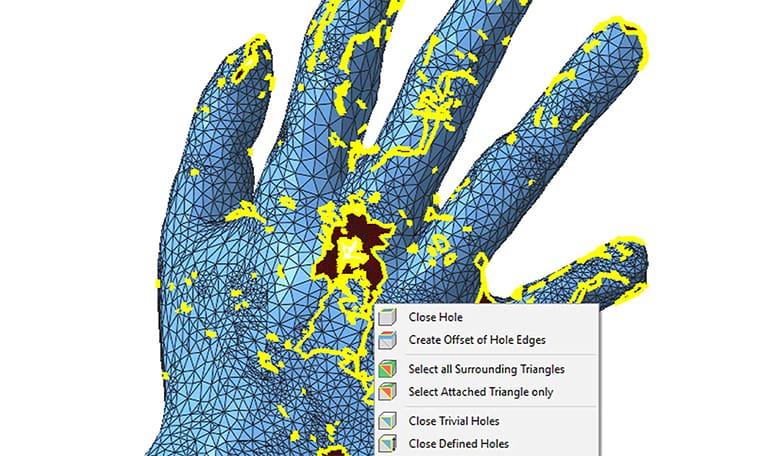
One of the many things that separates Netfabb from an STL file fixing program is its ability to import data from nearly any computer aided design (CAD) system (Solidworks, NX, Inventor, and others) and quickly analyze parts for printability, print time, estimated material usage, and possible cost, depending on exactly which kind of printer you have.
If errors in the print data are found that will affect printability, Netfabb offers a menu of repair options.
A 3D model can have errors that often aren’t a big issue if the file is sent to a CNC milling machine, for example, but can prevent it from printing properly on a 3D printer. A digital file could have holes in the mesh, unconnected borders, and faults in the orientation, among other issues. Your file may also need to be repaired to be printed with specific technology (FDM, SLS, etc.) and on specific printers (HP, Stratasys, Formlabs, etc.).
Netfabb takes all of this into account and analyzes digital files for all common errors, giving you options to let the program automatically fix the problems or you can do it manually. You can save time by creating scripts to apply custom fixes to common problems you find in your files, repair hundreds of parts at once, and adjust the mesh for more detailed printing.
You can also batch process hundreds of parts and automate repetitive fixes using Python or custom workflows.
Netfabb Simulation Capabilities
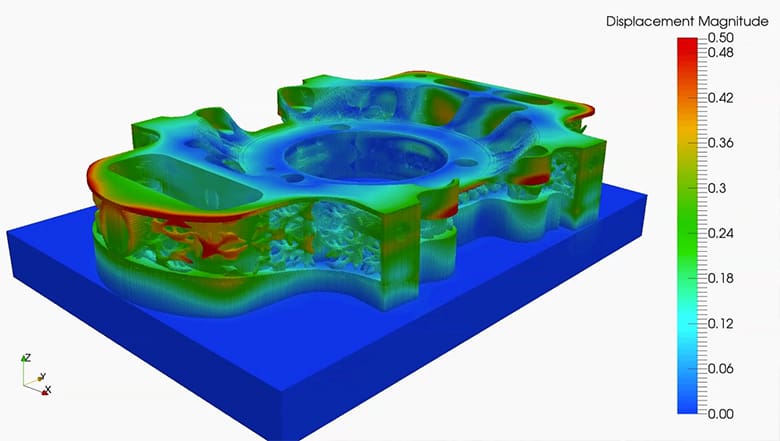
The Netfabb Simulation tool is an additional optional component designed to make your part production more reliable, predictable, and repeatable.
Netfabb Simulation features include the ability to:
- Predict the thermal and mechanical response of parts to help reduce build failures.
- Generate PRM files based on chosen material and process parameters for increased accuracy.
- Simulate the additive manufacturing process for powder bed fusion to identify potential causes of build failures.
- Capture interactions between parts and the distortion of the build plate.
- Identify possible build failures with powder bed processes that may cause equipment damage.
- Predict support failure to aid in the design and placement of support structures.
- Predict how metal additive manufacturing parts will deform to help reduce build failures.
- Apply multiscale modeling to predict regions of a build that get too hot or not hot enough during processing.
- Compensate for distortion to achieve the desired shape when printed.
Customize Supports & Part Packing
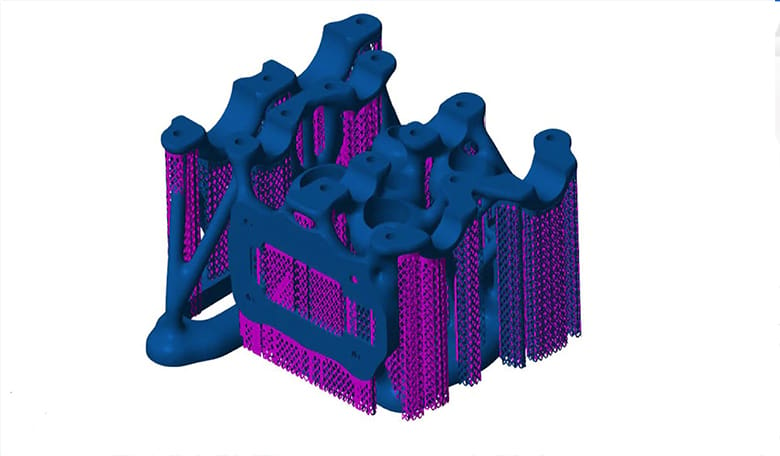
Netfabb’s support-maker module provides an interface for analyzing your part’s support needs, generating, editing, and applying the supports, as well as viewing the results.
Netfabb enables flexible application of supports. You can opt to have supports applied automatically, which can be recreated with fewer or no manual steps whenever an arrangement or packing changes, or manually create supports to allow for more freedom in matching your part’s unique requirements with your chosen printer technology.
To help distinguish parts from supports, Netfabb handles parametric supports as attachments colored in blue by default.
Once your part file is optimized and supports are added, it’s almost ready for the printer.
Netfabb features the ability to pack parts by shape into your build platform to make the most of the space and print as many pieces at once as possible, cutting down on time and materials. The 2021 upgrade includes two new 3D packers: one based on simulating part movement under gravity, and one that sorts by size and packs large parts first, then follows with medium and small parts to make better use of available space.
What's New in Netfabb 2026
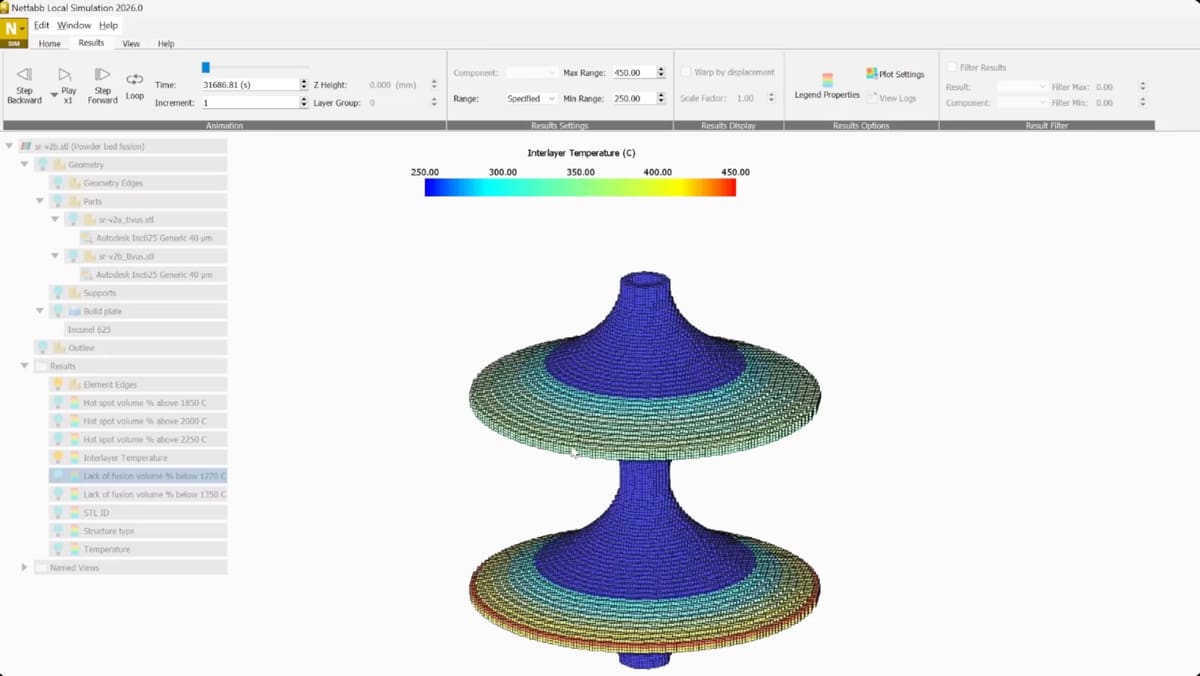
A key focus of the 2026 update is on three areas: supports, packing, and simulation.
New workspaces were added for Aconity3D, Farsoon, Formlabs, HP, Photocentric, Scanlab, Schaeffler Special Machinery, Stratasys, and Weirather machine models.
True Shape Packer
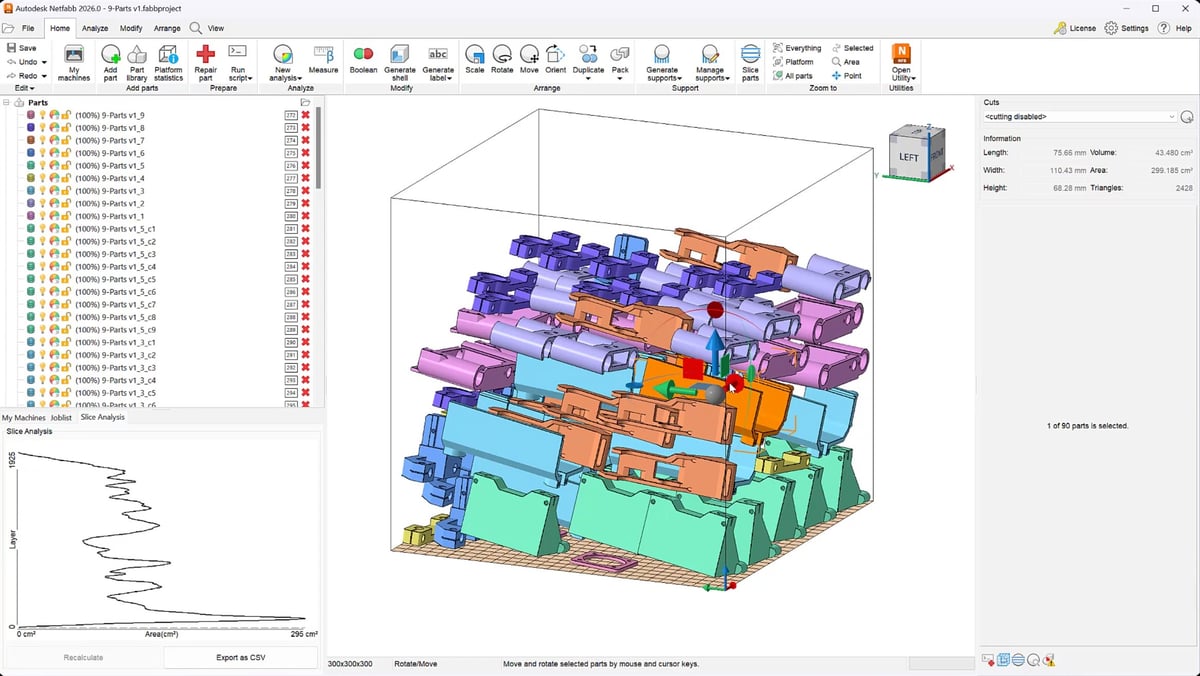
The new True Shape Packer algorithm enhances part nesting by using the actual geometry of parts rather than relying solely on bounding boxes. This approach allows for more efficient use of build space, reducing material waste and potentially decreasing print times.
ERP Integration
Especially for 3D printing services, either internal or external, Netfabb has an improved integrating with existing database-based systems, such as ERP (Enterprise Resource Planning), which can generate reports with individual part itemization per document in much more customized and flexible ways than trying to solve it monolithically within Netfabb’s report generation alone.
Make Better Supports
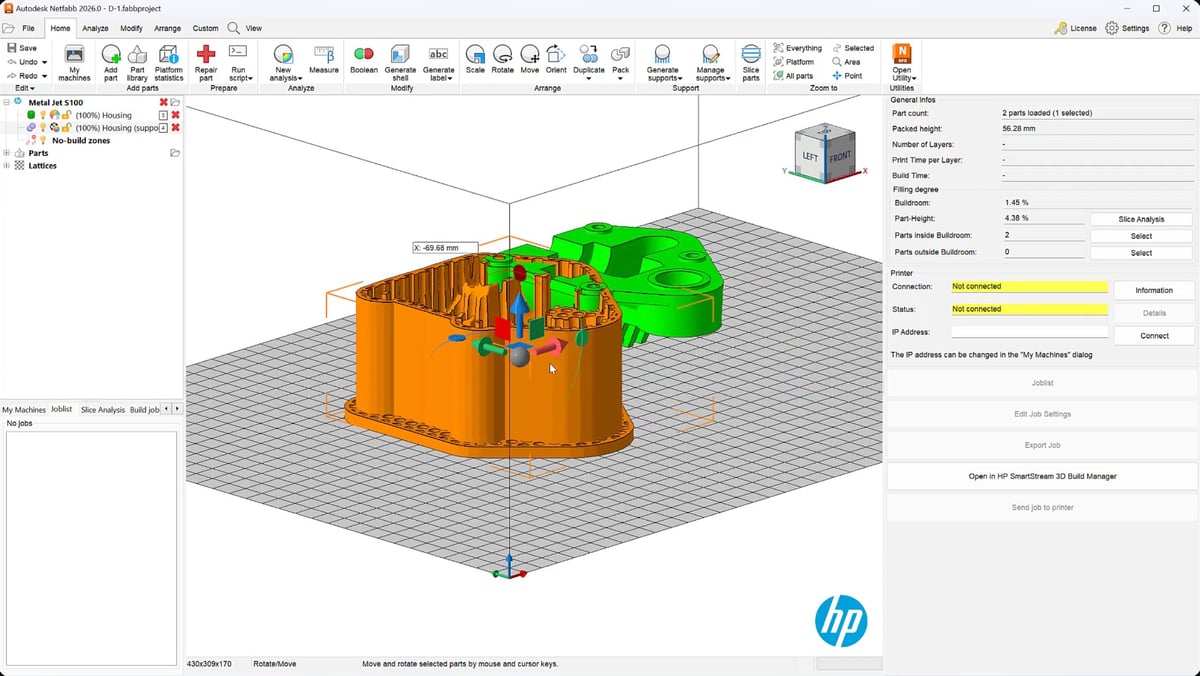
Netfabb 2026 introduces shadow support structures for the HP Metal Jet S100, a metal binder jetting machine, which are particularly good for complex geometries and overhangs. These supports improve print stability and reduce the likelihood of print failure.
Several new support actions and support geometry parameters help with printability. For example, you can rotate the entire grid of bar supports on areas, not just the hatches themselves, to keep them in line and save time otherwise spent on beam repositioning. You can also fill in unnecessary gaps in base plates generated from part shadow to make them more rigid and easier to remove as a whole piece. There’s also the new ability to invert the selection of supports with a simple command and keyboard shortcut.
Simulation Improvements

Netfabb Local Simulation’s ghost part feature, first introduced in 2025, creates ghost parts based on the max temperatures of both parts and supports. In cases where the support structures get hotter than the parts, this may or may not be desirable. Netfabb Local Simulation 2026 has a new feature to ignore high temperatures in supports, and instead design a ghost part with sufficient area and dwell to keep only the part under the target max temperature.
Color and Texture Module Updates
Usability improvements have been made to the Color and Texture module, streamlining the application of textures and color data to 3D model. These enhancements facilitate better visualization and preparation of models for printing, especially when dealing with multi-color or textured prints.
Price & System Requirements

Netfabb is available within a subscription to Autodesk’s CAD software Fusion since they are so often used together as a workflow. Netfabb Simulation is an additional utility for $33,950. Netfabb has a free, but limited-time, offer for students and educators.
Fusion with Netfabb software includes efficient build preparation capabilities alongside tools for optimizing designs for additive manufacturing and simulating metal additive processes.
System Requirements for Netfabb 2026
Netfabb is only available for Windows, not Mac.
You May Also Like:
License: The text of "Autodesk’s New Netfabb 2026: All You Need to Know" by All3DP Pro is licensed under a Creative Commons Attribution 4.0 International License.
CERTAIN CONTENT THAT APPEARS ON THIS SITE COMES FROM AMAZON. THIS CONTENT IS PROVIDED ‘AS IS’ AND IS SUBJECT TO CHANGE OR REMOVAL AT ANY TIME.



